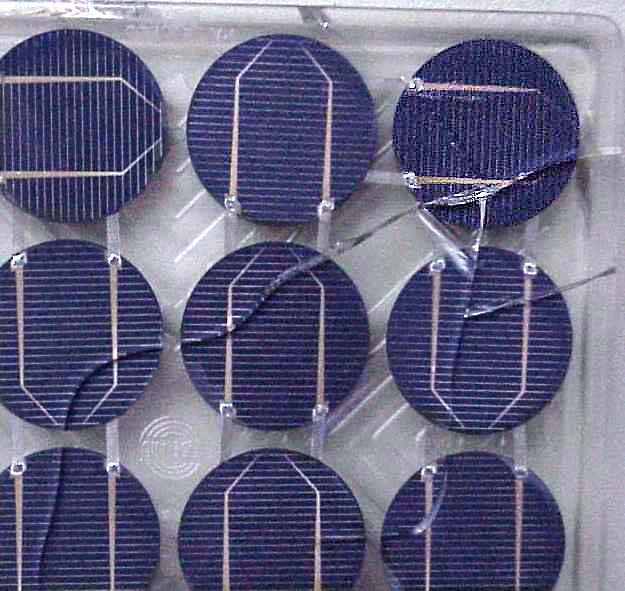Hot-spot heating occurs when there is one low current solar cell in a string of at least several high short-circuit current solar cells, as shown in the figure below.
One shaded cell in a string reduces the current through the good cells, causing the good cells to produce higher voltages that can often reverse bias the bad cell.
If the operating current of the overall series string approaches the short-circuit current of the "bad" cell, the overall current becomes limited by the bad cell. The extra current produced by the good cells then forward biases the good solar cells. If the series string is short circuited, then the forward bias across all of these cells reverse biases the shaded cell. Hot-spot heating occurs when a large number of series connected cells cause a large reverse bias across the shaded cell, leading to large dissipation of power in the poor cell. Essentially the entire generating capacity of all the good cells is dissipated in the poor cell. The enormous power dissipation occurring in a small area results in local overheating, or "hot-spots", which in turn leads to destructive effects, such as cell or glass cracking, melting of solder or degradation of the solar cell.
Heat dissipated in a shaded cell caused the module to crack.
- Log in or register to post comments
- 4 comment(s)


